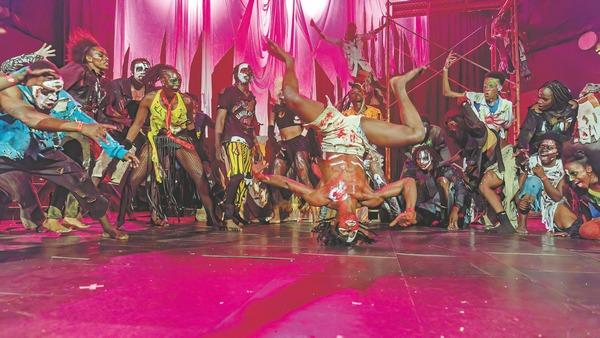 Acrobats perform in the Haunted Circus show at the Sarakasi Dome arena in Nairobi, Kenya on Oct 30. The shows have attracted global attention, and the performers have been invited to appear in Europe and across Africa. (XIE SONGXIN / CHINA DAILY)
Acrobats perform in the Haunted Circus show at the Sarakasi Dome arena in Nairobi, Kenya on Oct 30. The shows have attracted global attention, and the performers have been invited to appear in Europe and across Africa. (XIE SONGXIN / CHINA DAILY)
Mathias Kavita little knew 40 years ago that a journey to China would dramatically transform his life.
The then 13-year-old boy from Mombasa, Kenya, knew nothing about acrobatics until he and 23 other teenagers watched a film at the Chinese embassy in Nairobi, the African nation's capital. Kavita, a budding gymnast, had just won a national competition.
"Before traveling to China, we underwent orientation, which included watching films of acrobats recorded in China," Kavita said at his office in Nairobi, which is strewed with equipment for acrobats, some of it imported from China.
As a gymnast back then, the films of acrobatics we watched at the Chinese embassy was the first time I had seen such performances. I was particularly impressed by Chinese children performing moves I had never experienced before ... This made me even more determined to travel to China and learn more.
Mathias Kavita, Kenyan gymnast
Pictures of his past performances hang from the walls, and the office is also home to newspaper cuttings and posters of his past and upcoming shows.
The office is located in the Sarakasi Dome arena, which was built a decade before Kenya attained independence in 1963.
Kavita, who now works with the Sarakasi Trust to tap young acrobatic talent, said: "As a gymnast back then, the films of acrobatics we watched at the Chinese embassy was the first time I had seen such performances. I was particularly impressed by Chinese children performing moves I had never experienced before.
"This made me even more determined to travel to China and learn more."
Kavita has since become a top trainer in Kenya, having instructed more than 1,000 acrobats to perform in shows across the world.
"My training in China was instrumental, because it made me an international performer and a good teacher of acrobatics," he said.
In 1983, Kavita heard that the Chinese embassy in conjunction with the Kenyan government was looking for children to send for acrobatics training in China. Those selected would subsequently return to Kenya to work with the government in taking part in shows nationwide to make acrobatics popular among Kenyans.
Kavita had never traveled outside Kenya. After attending several auditions with some 200 students from other schools, he was among the 24 shortlisted to go to China. This was the first step in what turned out to be his long journey in acrobatics.
He has transformed acrobatics in Kenya by introducing the dynamic moves he learned in China 40 years ago into local routines.
As Kenya and China mark 60 years of diplomatic relations next month, few Kenyans can match Kavita's remarkable story of deep-seated friendship and mutual exchanges between the two countries.
ALSO READ: Kenya keen to woo Chinese tourists
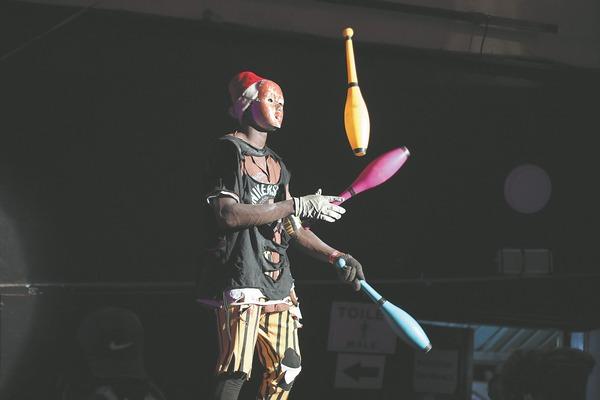 Acrobats train under the guidance of Mathias Kavita in Nairobi. During their performances, they incorporate African routines with Chinese skills. (XIE SONGXIN / WU XIAOHUI / CHINA DAILY)
Acrobats train under the guidance of Mathias Kavita in Nairobi. During their performances, they incorporate African routines with Chinese skills. (XIE SONGXIN / WU XIAOHUI / CHINA DAILY)
Excited group
In 1983, the group of 24 students could not hide their excitement on arrival in Guangzhou, the capital of Guangdong province.
Kavita said that despite not being as developed as it is today, the city left a huge impression on him, as it was the largest he had visited. He loved its mix of urban and rural life, and was struck by the numerous bicycles, which were the main mode of transportation.
"When we arrived at Guangzhou Acrobatic Arts Troupe School, we were greeted by the sight of a huge banner welcoming us," Kavita said.
As the weather in Guangzhou was warm, the Kenyans felt at home and found it easy to adapt to local life.
Kavita said that despite not being as developed as it is today, Guangzhou, the capital of Guangdong province, left a huge impression on him, as it was the largest he had visited. He loved its mix of urban and rural life, and was struck by the numerous bicycles, which were the main mode of transportation
As the Guangzhou troupe was one of the best internationally known acrobatic groups in China, the young visitors immediately felt they had arrived at the school best suited for them.
The young Kenyan team members learned Chinese within three months, and Kavita said they could communicate well with their Chinese hosts.
As foreign students, they were allocated a teacher to help them learn the language and familiarize themselves with Chinese culture, and this assistance proved vital for them adapting to Chinese ways.
"In addition to the Chinese language teacher, an interpreter helped us communicate, so we managed to grasp the language quite quickly, because Chinese students and teachers at the school mingled with us," Kavita said.
However, with no previous experience in acrobatics, it was not all smooth going for Kavita and his colleagues.
He said the Chinese term "mama laile", which loosely translates as "mama is coming", was one of the first Mandarin expressions he learned. This was because during their early days in China, the Kenyans endured physical pain in order to become as flexible as young Chinese performers at the school.
Despite being strict and demanding a high level of discipline, Kavita said their acrobatics coaches in China were extremely understanding.
Every time his colleagues complained about the demanding rigors of acrobatics or of being homesick, the Chinese teachers told them fondly "mama laile" as a way of letting them know they would eventually be reunited with their families.
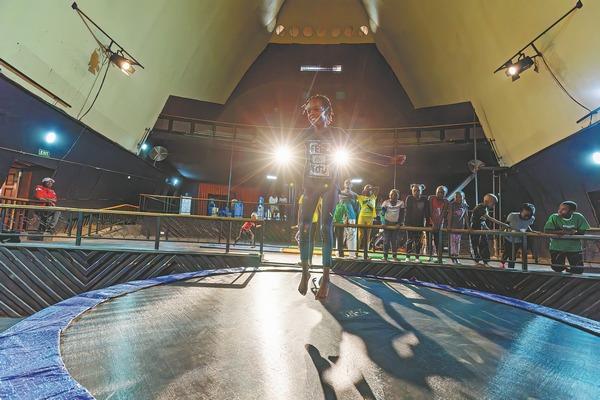 A young student trains on a trampoline at the Sarakasi Dome arena. Mathias Kavita offers instruction to children every Saturday. (XIE SONGXIN / CHINA DAILY)
A young student trains on a trampoline at the Sarakasi Dome arena. Mathias Kavita offers instruction to children every Saturday. (XIE SONGXIN / CHINA DAILY)
"Our teachers in Guangzhou were not only tough, but also determined to push us beyond our limits. Over time, most of the moves that previously seemed impossible came naturally to us. The school was dedicated to our success, and this can be seen from the fact that we were assigned 16 acrobatics teachers during our two years of training in China," Kavita said.
He particularly remembers one of his teachers who was tough on him during class, but afterward invited him to his home to meet his children, greatly helping Kavita adjust to life overseas.
His most memorable event during his time in China was a graduation performance at the Guangzhou Friendship Theatre, which was attended by ambassadors, officials, and foreign and local students in Guangzhou. Kavita also treasures his graduation certificate, which he keeps in a leather case in his office
Due to their Chinese coaches' dedication and skills, the Kenyans mastered their acrobatics training within two years, and were ready to put on professional performances.
But Kavita and his fellow students continued to attend school in China to learn mathematics, English, geography, literature, art and Chinese. His favorite publication was a Chinese booklet titled Say it in Chinese, which he carried with him wherever he went.
His most memorable event during his time in China was a graduation performance at the Guangzhou Friendship Theatre, which was attended by ambassadors, officials, and foreign and local students in Guangzhou. Kavita also treasures his graduation certificate, which he keeps in a leather case in his office.
"I really appreciate the fact that despite being trained in China, our instructors impressed upon us the need to include an African element in our performances, and always encouraged us to come up with African routines incorporated with the Chinese skills we learned," he said.
ALSO READ: University students see window of opportunity in China-Kenya relations
Moves copied
When the group returned to Kenya in 1985, local acrobats started copying moves the students learned in China, such as jumping through hoops and performing handstands on stacked furniture, along with skating and lion dancing.
The group formed a national acrobatic troupe, which toured Kenya to perform at government functions and other events presided over by the African nation's then-president Daniel arap Moi. However, in 1989, Kavita left to pursue a career with another troupe in Mombasa, helping him transition from performer to trainer.
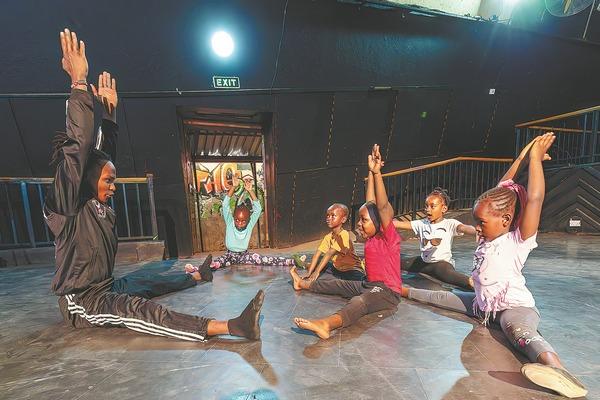 Acrobats train under the guidance of Mathias Kavita in Nairobi. During their performances, they incorporate African routines with Chinese skills. (XIE SONGXIN / WU XIAOHUI / CHINA DAILY)
Acrobats train under the guidance of Mathias Kavita in Nairobi. During their performances, they incorporate African routines with Chinese skills. (XIE SONGXIN / WU XIAOHUI / CHINA DAILY)
Due to a lack of facilities, his dream of teaching acrobatics was not fulfilled immediately. The shortage of public schools teaching acrobatics in Kenya was also a problem.
Kavita hoped that on returning home, the Kenyan government would build a school like the one in Guangzhou, but construction of such a school has not been started.
By developing performances that combine Chinese and African acrobatics, Kavita's shows have attracted attention on the world stage, and his performers have been invited to appear in Europe and across Africa
"I want to return to the Guangzhou Acrobatic Arts Troupe to see the progress it has made, meet the teachers who trained us, and acquire more knowledge to help me manage acrobatics in Kenya. I would love to advance my training skills and help take Kenya to the next level," said Kavita, who has not been back to Guangzhou since 1985.
China Daily contacted the Guangzhou Acrobatic Arts Troupe to talk to Kavita's coaches, but only one of them from his time with the troupe is still alive, and due to memory loss, he was unable to give a coherent interview.
By developing performances that combine Chinese and African acrobatics, Kavita's shows have attracted attention on the world stage, and his performers have been invited to appear in Europe and across Africa.
On weekdays, his students start arriving at the Sarakasi Dome arena as early as 7 am. When Kavita joins them, they rehearse their moves, which include balancing on unicycles while juggling balls, forming intricate human pyramids, and practicing head-spinning summersaults and flips.
As Kavita puts them through their paces, he focuses on technique, progression, strength, balance and flexibility. He also injects fun into the lessons, and has created a friendly, close-knit group.
 Acrobats train under the guidance of Mathias Kavita in Nairobi. During their performances, they incorporate African routines with Chinese skills. (XIE SONGXIN / WU XIAOHUI / CHINA DAILY)
Acrobats train under the guidance of Mathias Kavita in Nairobi. During their performances, they incorporate African routines with Chinese skills. (XIE SONGXIN / WU XIAOHUI / CHINA DAILY)
One of the group members, Moses Otieno, 27, has just returned to Kenya from Hebei province, where he undertook a four-month performance tour with six other Kenyan acrobats. Otieno said the tour made him appreciate the Chinese dedication to resources for acrobats and the amount of time spent on the profession.
His main wish is for more Africans to become familiar with Chinese acrobatics, as this will help them become professional performers, while offering the world a unique act that combines Chinese and African concepts.
I plan to return to China to learn how to run a school like the one in Guangzhou. I hope to get a sponsor — government or private — to help me establish the school, as many young people admire what we do, but lack facilities for the proper training to make acrobatics a professional career.
Mathias Kavita, Kenyan gymnast
Bryson Wandabwa Wangilwa, who started training with the children's program at Sarakasi Dome, said he decided to take acrobatics seriously after being encouraged by Kavita.
At the age of 19, he appreciates the chance to learn acrobatics at a professional level, because of the discipline and strong work ethic it has instilled in him. Even though Wangilwa had a different coach while training as a child, his performance has greatly improved since he joined Kavita's class last year.
"I was taught lion dancing by Kavita, who has encouraged me to include moves to create choreography that brings African and Chinese cultures together," Wangilwa said.
"I am encouraged by the coaches who take care of their families, pay school fees for their children, and earn a living from acrobatics. My dream is to be a circus performer, but before I can do that, I hope to get further training, in China if possible."
For dreams such as Wangilwa's to come true, Kavita said it is vital that the links forged between Kenya and China in acrobatics are carried forward to give young enthusiasts opportunities similar to those he had during his younger days.
"I believe that acrobatics is a career like any other, and that being professionally taught by Kenyan and Chinese acrobats can help many young people who are facing unemployment today," Kavita said.
"I plan to return to China to learn how to run a school like the one in Guangzhou. I hope to get a sponsor — government or private — to help me establish the school, as many young people admire what we do, but lack facilities for the proper training to make acrobatics a professional career."
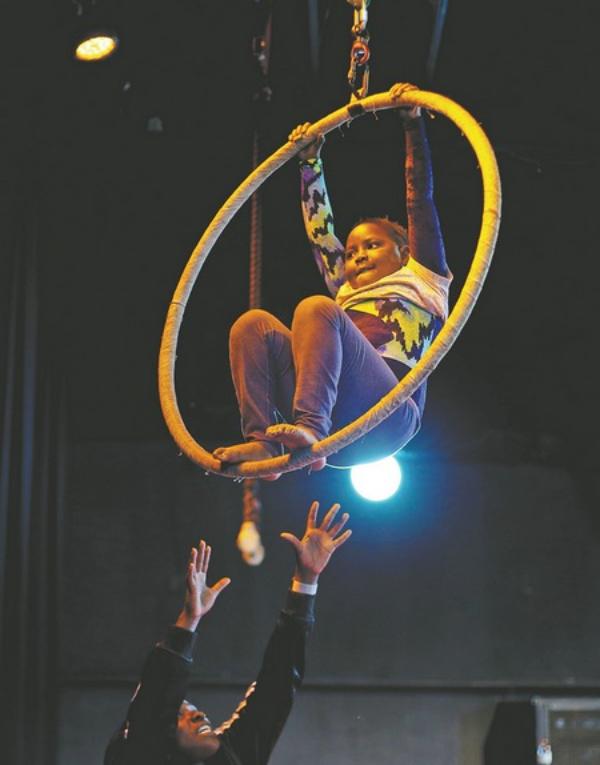 Acrobats train under the guidance of Mathias Kavita in Nairobi. During their performances, they incorporate African routines with Chinese skills. (XIE SONGXIN / WU XIAOHUI / CHINA DAILY)
Acrobats train under the guidance of Mathias Kavita in Nairobi. During their performances, they incorporate African routines with Chinese skills. (XIE SONGXIN / WU XIAOHUI / CHINA DAILY)
He believes that acrobatics in Kenya, and Africa in general, pays well if performers are professionally trained. He has met many young people who want to train as professionals, but lack the facilities to do so. Instead, they end up staging impromptu performances at markets or major road intersections, but make little money from them.
Kavita also holds training sessions for schoolchildren during weekends, and is available to take private sessions with individuals, schools or organizations.
Eric Musyoka, one of Kavita's students, also feels that a decent living can be made from acrobatics, as long as professional training is given.
READ MORE: Chinese-built infrastructure gives Kenya a face-lift
"Acrobatics has good potential to grow in Kenya, especially among jobless young people, because it can help them avoid lawless behavior. Acrobatics has changed my life, as apart from performing in various areas of Kenya, I have managed to travel to a number of countries, including a recent trip to Spain," Musyoka said.
Qiu Quanlin in Guangzhou contributed to this story.
Contact the writers at otiato@chinadaily.com.cn


